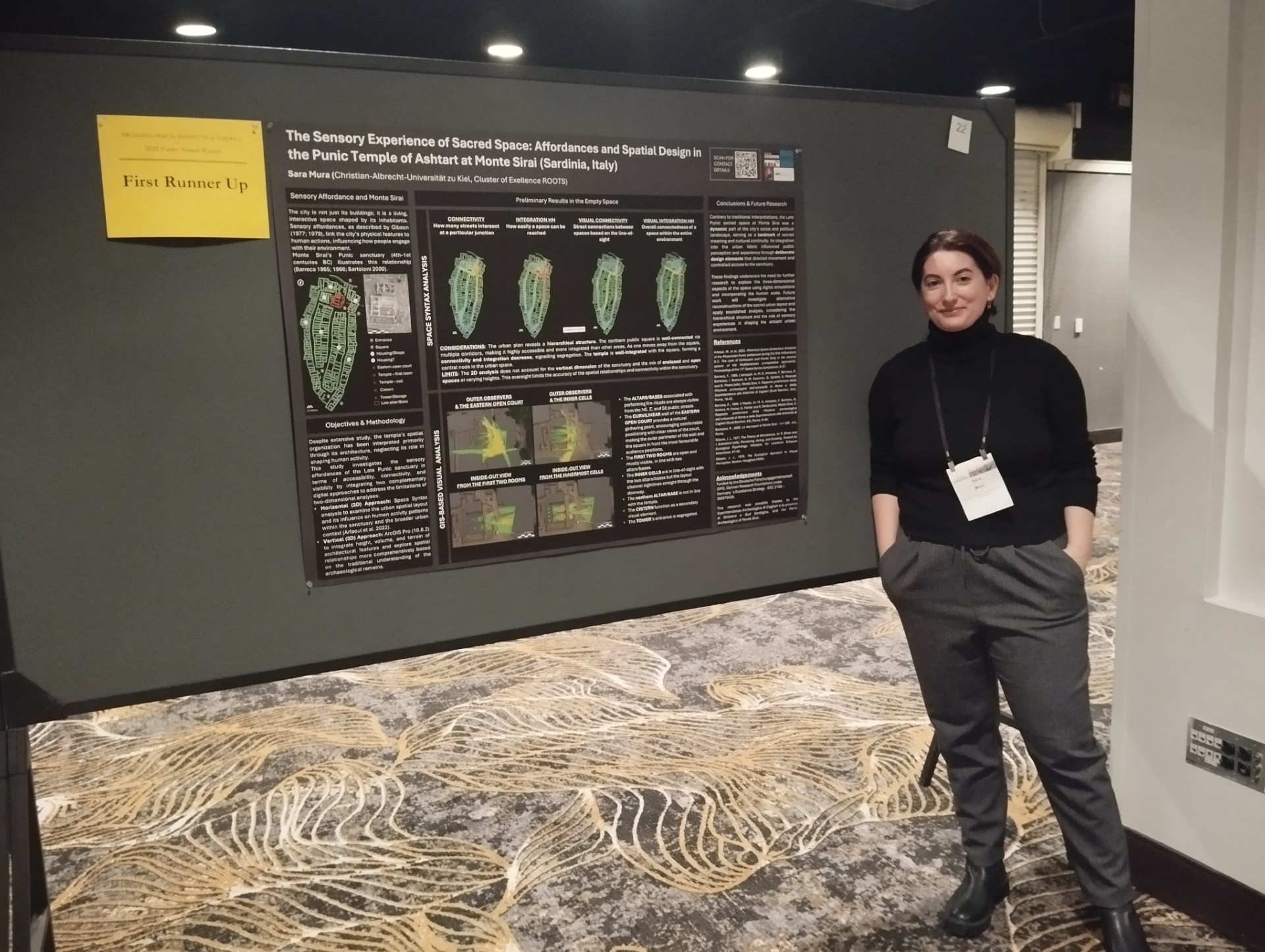January 21, 2025
At the 2025 AIA Annual Meeting (Philadelphia), we saw a variety of posters featuring work from around the world. Annual Meeting participants were treated to an incredible array of diverse research presented in a visual format.
Three Poster Awards are given out during the Poster Award Sessions: the Best Poster Award, First Runner-Up, and the Student Poster Award.
We asked the winner of this year’s First Runner-Up Poster Award a few questions about herself and her project:
Best Poster Award Recipient: Sara Mura
“The Sensory Experience of Sacred Space: Affordances and Spatial Design in the Punic Temple of Ashtart at Monte Sirai”
Punic temples, like other sacred spaces in the ancient Near East, have traditionally been interpreted as divine dwellings for ritual engagement. Research has primarily focused on their spatial organization through two-dimensional plans, often overlooking the sensory and three-dimensional aspects of these spaces, as well as their integration into the surrounding urban environment.
As part of my PhD research, this study reevaluates the temple of Ashtart at Monte Sirai (4th–2nd centuries BC) in Sardinia (Italy) as a dynamic component of the city. It explores the interaction between its interior ritual space and the surrounding profane environment, examining how the temple’s material boundaries guided movement and controlled visibility. Drawing on Gibson’s concept of sensory affordances, the research investigates how the temple’s design shaped sensory experiences, fostering communal identity and cultural continuity within the urban context.
To achieve this, the study employs a combination of digital techniques. Space Syntax (2D) is used to analyze the spatial layout and its influence on movement patterns within the sanctuary and the broader urban fabric. GIS-based tools (3D) integrate height, volume, and terrain, providing a more comprehensive understanding of spatial relationships.
Contrary to traditional interpretations, the findings reveal the temple as a dynamic element of Monte Sirai’s social and political landscape, actively shaping perceptions and interactions through its deliberate design. This study underscores the need for further exploration of the sensory and three-dimensional dimensions of Punic sacred spaces.
Sara Mura, ROOTS Cluster of Excellence, Christian-Albrecht-Universität zu Kiel

How long have you been a member of the AIA? How many Annual Meetings have you attended (in-person or virtually)?
SM: This is my first year. The event in Philadelphia was my very first meeting.
How did you first come to this project/topic?
SM: The poster is a small but exciting part of my PhD project on the sensory affordances of Punic ritualised spaces. In Punic Archaeology, we have very few written sources and none consists of primary literary texts narrating the life experiences of those who identified as part of what we called Punic communities. However, this presents an opportunity to be more creative in the way we approach the archaeological remains. By applying sensory-based theories developed within the subfields of phenomenology and sensory archaeology, we can re-evaluate how the archaeological record embodied the past community’s physical and cognitive experiential dynamics. While we cannot know single individuals, this approach can improve our understanding of the lived spaces experienced by the community as a whole.
What is one cool fact or interesting result from this project that didn’t make it onto the final poster?
SM: The studies on accessibility and visual affordance of the urban temple are only the beginning. I will apply similar analyses to the extra-urban sanctuary (i.e. the tophet) and the rock-cut chamber tombs that were in use at the same time as the urban temple. Next, I will explore a dimension that has never been explored before in Punic architecture: the acoustic one, conducting measurements within the 3D environment
What is your advice to students/new authors who are preparing posters for upcoming conferences?
SM: When you are feeling unsure about how to structure your poster, take a look at previous years’ events! You will be amazed at how much you can learn from them, especially when it comes to text-image balance. Remember: the poster is your opportunity to get the conversation started – it is not the place to include the whole of your research.
Notifications